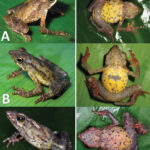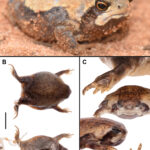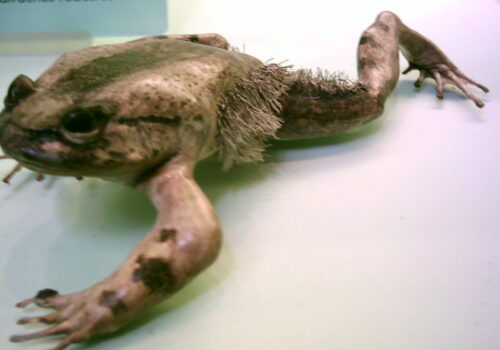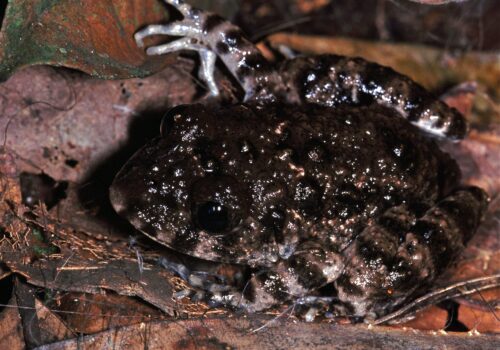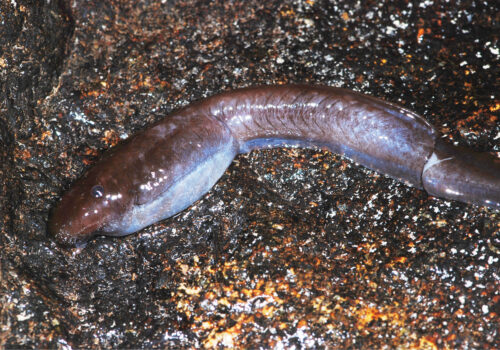Hidden Treasures of Tanzania: Unveiling the Secretive Arthroleptis fichika Frog#
On a damp evening, deep in the shadowy underbrush of a remote Tanzanian forest, a diminutive performer begins its nightly symphony. Among moss-covered logs and leaf litter, whispers of rhythmic clicks and delicate chirps emerge, softly resonating through the humid darkness. These gentle sounds belong to a small and elusive creature known formally as Arthroleptis fichika, affectionately called the “hidden squeaker” by local conservationists and herpetologists due to its secretive nature and distinctive call. Despite its modest size and cryptic coloration, this remarkable amphibian plays a pivotal role in its ecosystem, embodying the delicate balance awaiting our understanding and protection.
In this journey through the natural habitat, fascinating behavior, and essential ecological significance of Arthroleptis fichika, you will discover not only why this tiny frog deserves your admiration but why its safeguarding is crucial to the health and vibrance of East Africa’s threatened wilderness regions.
Taxonomy and Classification#
Belonging to the diverse and fascinating genus Arthroleptis, the species Arthroleptis fichika is a relatively recent addition to science, officially described in 2009 by herpetologist David Blackburn during intensive field surveys in Tanzania’s Eastern Arc Mountains. This genus, part of the family Arthroleptidae, comprises terrestrial breeds commonly known as squeaker frogs due to their characteristic calls.
Unlike many of their aquatic cousins, frogs of the genus Arthroleptis conduct their entire developmental cycle outside standing water bodies, relying instead on direct development. Only a handful of closely-related species exist, including Arthroleptis stenodactylus and Arthroleptis xenodactyloides, both sharing similar ecological niches and characterized by unique adaptations supporting their terrestrial lifestyles.
Natural Habitat#
The hidden squeaker frog finds sanctuary in a distinct ecological region of Tanzania known as the Eastern Arc Mountains. Recognized globally as one of the biodiversity-rich hotspots, this range boasts evergreen montane forests cloaked in perpetual mist.
A Forest Floor Haven#
Below the dense foliage, Arthroleptis fichika inhabits the humid microclimate of damp leaf litter, logs, and humus-rich soils. This habitat provides essential moisture, protection from predators, and abundant prey resources. Humidity is crucial to their delicate skin; they require moist environments to maintain proper respiration and prevent dehydration. Each leaf pile, decaying wood, or moss-covered rock represents a microhabitat where these frogs conduct essential daily tasks.
Their preference for this specific microhabitat indicates a reliance on ecosystem stability. Alterations in forest structure or soil moisture patterns, even minor, can trigger displacement or reduction in viable habitat, underscoring the importance of environmental integrity.
Physical Characteristics#
Once located amid tangled foliage, the hidden squeaker reveals itself to observers as an exquisite example of evolutionary fine-tuning. Measuring rarely more than two centimeters, their bodies are perfectly adapted for their secretive lifestyles. Their small size enables them to effortlessly navigate beneath leaf piles, fitting through tight spaces imperceptible to many of their predators and prey.
Arthroleptis fichika boasts a cryptic coloration ranging from shades of muted browns to earthy tans, adorned by delicate mottling and irregular patterning to invoke camouflage amidst the surrounding foliage and forest floor debris. Upon closer inspection, their smooth skin texture reveals incredible subtlety and complex pigmentation, allowing the amphibian to remain virtually unseen to passing predators.
Adaptations for Survival#
Notably, unlike frogs living near water who rely heavily on powerful hind legs for long-distance jumps, Arthroleptis frogs possess comparatively less muscular limbs, suiting their need for short, precise movements and stealthy maneuvers in confined forest-floor habitats. Additionally, large eyes positioned centrally on their compact heads give them extraordinary visual acuity, crucial for detecting prey such as tiny insects scuttling along the leaf litter. Every aspect of their physical form narrates evolutionary pressures from their specialized habitats, molding a species finely attuned to subtlety, camouflage, and stealth.
Behavior and Life Cycle#
As nocturnal hunters, hidden squeakers spend daylight hours nestled inconspicuously beneath logs, rocks, or moist leaf litter. Twilight awakens their predatory instincts, sending them out across the damp ground in search of food—typically small invertebrates such as ants, mites, tiny beetles, and other minute insects. Employing subtle bursts of movement combined with exceptional camouflage makes them efficient hunters, relying heavily on surprise attacks rather than prolonged pursuits.
A Life without Tadpoles#
Perhaps most fascinating is their reproductive strategy. Unlike typical amphibians, Arthroleptis fichika exhibit “direct development,” laying eggs that bypass the aquatic tadpole stage entirely. Instead, embryos develop and metamorphose entirely within egg capsules hidden amongst leaf litter or crevices, emerging fully formed as miniature froglets. This remarkable adaptation negates the need for standing water sources, an evolutionary advantage especially within their montane habitat characterized by impermanent water availability and unpredictable rainfall patterns.
This strategy also enables them to breed much more opportunistically, timing breeding events based on moisture availability rather than seasonal rainfall—a flexible adaptation accentuating their resilience amidst a constantly changing environment.
Ecological Role#
The secretive existence of Arthroleptis fichika belies the crucial ecological functions it performs. Living atop forest floor detritus positions them centrally within the trophic web of montane forests. They both regulate populations of invertebrate prey and themselves provide food for numerous small predators, including birds, reptiles, and larger invertebrates. Such interactions keep ecosystems vibrant, balanced, and resilient, highlighting their essential ecological role within the Eastern Arc Mountains ecological community.
Threats and Conservation Status#
Despite their hidden nature and remote habitats, Arthroleptis fichika faces threats familiar to many endemic species in developing regions: habitat degradation, deforestation and land-use alteration driven by agriculture, logging, urban expansion, and charcoal production. Additionally, climate change places substantial pressure on sensitive montane microhabitats, altering rainfall regimes and atmospheric moisture levels critical for their existence.
Currently, Arthroleptis fichika is classified as “Endangered” by IUCN standards, primarily due to habitat restriction, steady habitat fragmentation, and ongoing threats to microenvironment stability. Conservationists are pushing for increased habitat protection within existing Tanzanian forest reserves and ecological corridors designed specifically to connect fragmented forest patches. Encouraging sustainable agriculture practices nearby and advocating for local forest stewardship programs also represent effective strategies aimed directly at safeguarding this unique species.
Cultural and Scientific Significance#
While lesser-known than charismatic megafauna such as elephants or lions, species like Arthroleptis fichika deeply interweave themselves with their ecosystems’ fabric. Small amphibians often persist as crucial indicators of environmental health, providing early warnings of ecological disruptions such as pollution or climate shifts—important for local cultures reliant upon natural resources for survival.
Scientifically, hidden squeaker frogs are invaluable in studying evolutionary responses to isolated biogeographic zones within the Eastern Arc Mountains. Close examination of their genetic traits has led researchers like Blackburn to understand species diversification, evolutionary shifts in reproductive strategies, and responses to climate stressors. Such knowledge enriches conservation biology, further informing practical approaches to ecosystem protection and species survival.
Conclusion: Guardians of the Forest Floor#
The tiny yet captivating Arthroleptis fichika frog embodies the quiet worth of biodiversity preservation. Its story unravels ecological tales interwoven beneath shadowy forests, where unseen dramas subtly maintain essential biological balance. Recognizing and protecting these unsung heroes is more necessary than ever, highlighting humanity’s profound dependency upon nature’s quieter corners.
As we embrace these hidden frogs’ significance, let us amplify conservation voices advocating for species like the secretive squeaker, ensuring their habitats remain safe and intact. After all, in safeguarding a hidden treasure as modest as Arthroleptis fichika, we ultimately protect the priceless mosaic woven intricately through Earth’s landscapes.


